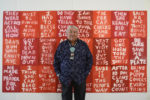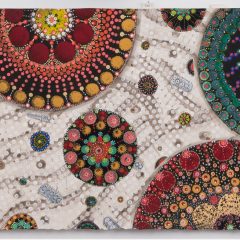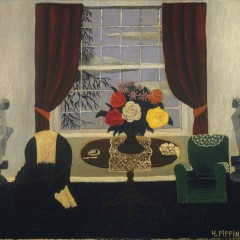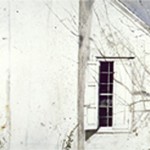Chadds Ford, Pennsylvania is home to something of an Andrew Wyeth (1940–2009) cult. Touted as one of the most well-known American artists of the 20th century, Wyeth spawned a wealth of imitators. His signature style gave rise to a seemingly never-ending procession of ersatz pastoral landscape paintings, replete with modest barns and farm animals. The latter are reproduced and displayed enthusiastically throughout Delaware County, found in many a living room or coffee shop. Meanwhile, N.C. (Andrew’s father) and Jamie (his son) maintain their own followings.
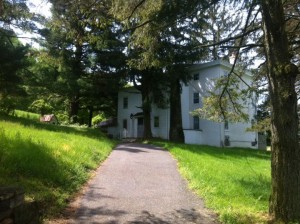
Wyeth’s ubiquity tends to group viewers into one of two camps: devotees and fervent detractors. When someone’s work is so omnipresent, it is hard to reexamine it without preconceptions.
The Brandywine River Museum seeks to combat this reaction by bringing in contemporary artists to engage with Wyeth’s art and sources of inspiration in novel ways. Thomas Padon, the museum’s director, hopes to host a series of site-specific installations throughout the grounds, bringing new eyes to the historic properties and landscape under the museum’s care.
Kuerner Sounds is the first of these, a pop-up exhibition funded by the Pew Center for Arts and Heritage.
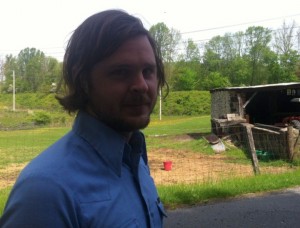
Kuerner Farm becomes a meeting place for old and new art
“No Idea is too Ridiculous: An Experiment in Creative Practice” is the audacious name of the Pew opportunity grant that led Supervisor of Education, Mary Cronin and Associate Curator, Christine Podmaniczky to reach out to Philadelphia-based sound artist, Michael Kiley. The program encourages local organizations to take artistic risks within the constraints of a tight budget and a markedly short time frame. The Brandywine River Museum is one of six Greater Philadelphia area institutions selected to participate this year, pursuing an inventive project that will take place over a fleeting eight weeks, from its initial planning, to its inception, to its final analysis.
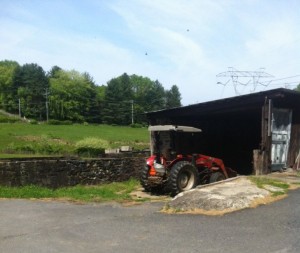
Cronin and Podmaniczky chose Kuerner Farm as a site to reexamine and enliven for visitors. Wyeth originally discovered it as a boy, when he developed a fascination with Karl Kuerner, a German immigrant and World War I machine gunner. After they became close friends, Wyeth was granted full access to the farm to paint and draw at will. He visited for almost seventy years thereafter, drawing continuous inspiration from the farm’s inhabitants and surroundings. Cronin asserts that the painter was intensely aware of the multisensory richness of the space. In a notable example, Wyeths’s painting “Spring Fed” (1967) references the echoes of dripping water and rustling animals heard throughout the barn.
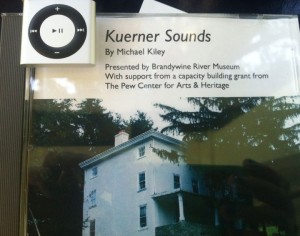
Today, the museum conducts twice daily tours of the historic property, leading visitors through an hour-long excursion. In an effort to provide fresh insights and encourage visitors to engage with the space in a novel way, Kiley was brought in to create a sound installation component to the tour. In a previous work centered around Rittenhouse Square, Kiley created a GPS-enabled IPhone app that played different environmental sounds depending on a pedestrian’s location, which sought to prevent people from retreating into themselves in public.
The auditory sense of place invoked by this earlier piece is what led to Kiley’s selection for the Kuerner endeavor; Cronin and Podmaniczky wished to explore the previously unexamined aural elements that make Kuerner Farm unique, something they felt Kiley would be acutely sensitive to.
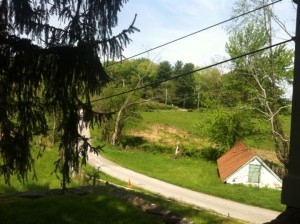
Michael Kiley creates sound art inspired by space and place
After first being contacted in March, Kiley was given a tour of the property, during which he quickly became acquainted with Wyeth’s relationship with the farm. Kiley later returned alone to capture field recordings. The five minute piece that results from the melding and layering of these clips is available to visitors on an IPod Shuffle as they enter the farm house. Visitors are encouraged to wander while listening; a particularly serene spot to listen to the work is on the back porch, with a prime view of the animals, pastures and architecture that informed its creation.
The impetus behind Kiley’s installations lies in a captivation with the manner in which sound shapes one’s experiences in particular locales. Kiley puts forth that while sound art is often obtuse, he strives for wider accessibility with his own work. His goal is to bring sound design out of the theater (where Kiley composes for a number of productions) and into public places. At Kuerner Farm, Kiley’s work reflects his shifting reactions to the space, which he found “spooky” and foreboding at first, but peaceful after further reflection. There is a weight here, the artist asserts, tied into the rich history of the area.

Kiley’s recording is available online, as well as in person during the tour. It incorporates frogs, whose “singing” frames the piece, along with manipulated field clips resembling dripping water, the opening of a screen door, and distant howling. To this, Kiley adds resounding claps, soft guitar strokes, and his own voice, a haunting choral accompaniment. A reflection on Wyeth’s relationship with Kuerner, perhaps a pseudo-father figure after the death of N.C., the lyrics capture what Kiley believes to be a universal phenomenon: “the loss of a vessel for our love means that love needs to go somewhere else … [loss] affects where we put our feelings.” The lyrics are as follows:
When you left, I wasn’t done pouring myself into you
Now I am left to search over tilted ground
I’ll have no shape to mold to
Until the inertia you created in me finds elsewhere to rest
Taken together, the assorted clips, embellished and melodized, create a piece that will resonate with visitors, offering a personal moment of reflection in an otherwise collective, well-choreographed experience. It will be interesting to see what the Brandywine River Museum does in the future to bring new context to an otherwise well-explored narrative.
“Kuerner Sounds” runs to May 24. Brandywine River Museum, 1 Hoffman’s Mill Road, Chadds Ford, PA 19317. To schedule a tour of Kuerner Farm, click here.


